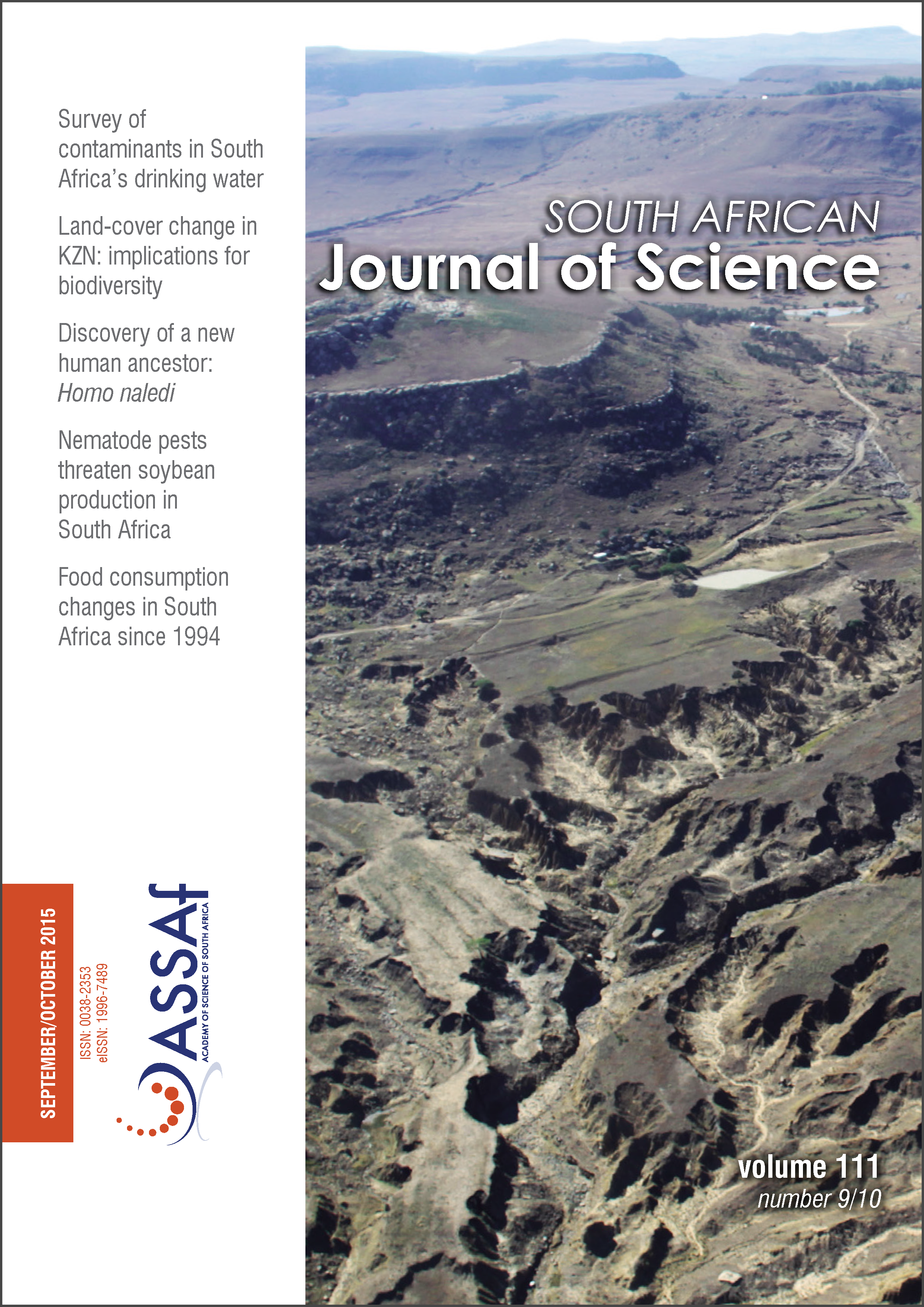The qualification of coal degradation with the aid of micro-focus computed tomography
DOI:
https://doi.org/10.17159/sajs.2015/20140025Keywords:
coal microstructure, compressive breakage, impact breakage, thermal breakage, X-rayAbstract
The production of unwanted coal fines during the handling and utilisation of coal is a serious problem in processes that rely on large or closely sized particles. Coal degradation occurs at many different steps within the beneficiation or utilisation processes and through many different mechanisms, none of which are understood thoroughly. In an effort to describe the degradation mechanisms, the changes within a number of coal particles were tracked using micro-focus X-ray computed tomography (μ-CT). The observed changes were caused by impact loading, compressive loading and thermal shock. The resolution of the μ-CT tomograms enabled the identification and tracking of changes in the coal microstructure. A comparison of the tomograms taken before, during and after breakage and fracture showed that the microstructure of coal had an influence on the breakage characteristics. For impact- and compressive loading as well as during thermal treatment, the biggest structural contributor was shown to be the network of pre-existing cracks and cleats within a particle. Lower density macerals contributed more to breakage than the higher density macerals and any structure (pre-existing cracks, lithotypes boundaries and mineral boundaries) present within the particles had the potential to either act as a crack initiation site, change the direction of a propagating crack or arrest crack propagation. The direction of the applied loads during compressive- and impact loading was the biggest contributor to the directionality of newly formed cracks. For thermal treatment, the vitrinite rich microlithotypes showed more new crack formation compared to the other microlithotypes present. The particles also showed no evidence of devolatilisation (an increase in the porosity of the particle) but did show evidence of thermal drying (new cracks formed perpendicular to existing cracks).
Published
Issue
Section
License

All articles are published under a Creative Commons Attribution 4.0 International Licence
Copyright is retained by the authors. Readers are welcome to reproduce, share and adapt the content without permission provided the source is attributed.
Disclaimer: The publisher and editors accept no responsibility for statements made by the authors
How to Cite
- Abstract 416
- PDF 439
- EPUB 197
- XML 227












.png)